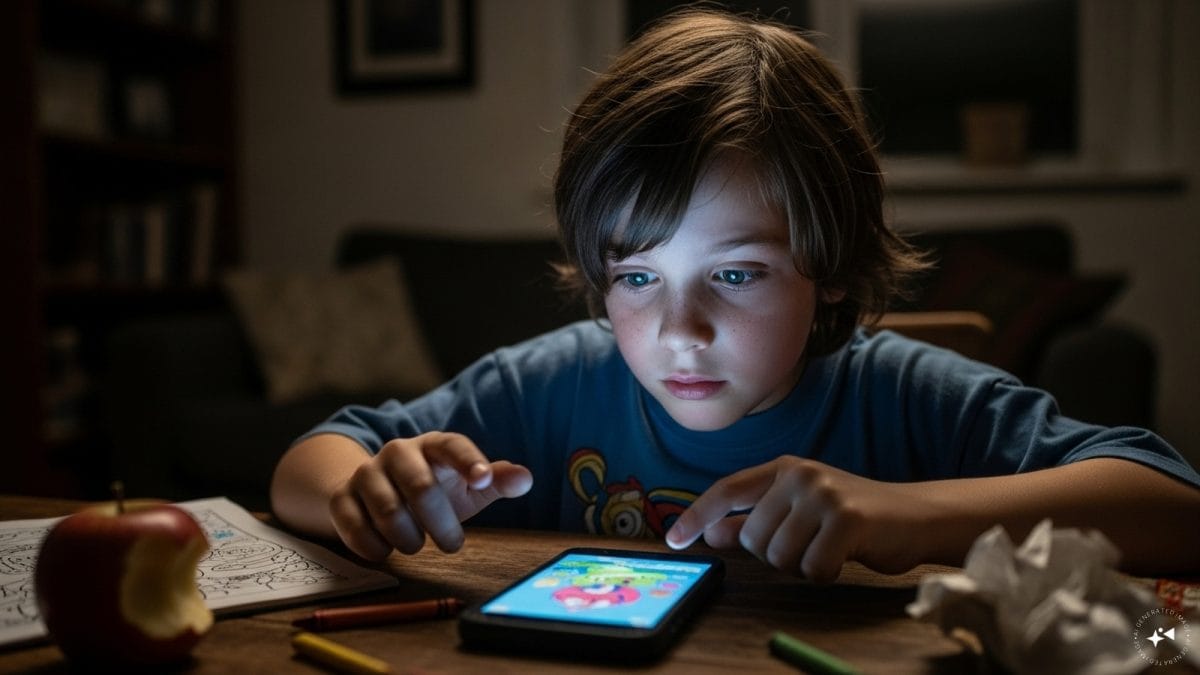Last Updated:
Children worldwide are experiencing vision problems at earlier ages due to increased screen time and decreased exposure to natural daylight.

Increased screen time is causing early myopia in children.
In the age of digital classrooms and gaming marathons, screens have become inseparable from childhood. But behind this glowing convenience lies a silent epidemic – childhood myopia, or nearsightedness. Across the world, children are developing vision problems earlier than ever before, largely due to increased screen time and reduced exposure to natural daylight. What was once a teenage concern has now crept into primary school years, raising serious red flags for eye health.
Experts warn that unchecked myopia isn’t just about needing glasses. It’s a public health issue with lifelong consequences if left undiagnosed or untreated.
Recommended Stories
Understanding Myopia In Kids
According to Dr. Amod Nayak, Head of Clinical Services, Dr. Agarwals Eye Hospital, Bangalore, “Myopia has emerged as one of the most alarming paediatric ophthalmic conditions worldwide, and the increase in screen exposure is a major contributing factor.” He explains that prolonged near work on devices demands sustained focus and convergence, and since digital screens are often held closer than books, they strain the visual system further.
Dr. Nayak adds, “Extended screen time replaces outdoor activity, which is vital because exposure to natural light plays a protective role in preventing myopia. Early diagnosis allows timely interventions like corrective lenses, orthokeratology, or pharmaceutical treatments that can slow its progression.”
The Digital Disconnect: How Screens Are Changing Young Eyes
The shape of the human eye is changing, quite literally. Dr. Shweta Ravichandran, Associate Consultant, Ophthalmology, MGM Healthcare, Chennai, explains, “Myopia occurs when the eye’s shape causes light to focus in front of the retina instead of directly on it, leading to blurry distant vision.” She notes that too much screen time promotes eye elongation, which worsens the condition.
“Children who spend less time outdoors are more at risk. Natural daylight stimulates dopamine release in the retina, which supports healthy eye growth,” she says.
Dr. Ravichandran points out early warning signs that parents should never ignore: “If your child is squinting, sitting too close to screens, complaining of headaches, or struggling to see the board in class, it’s time for an eye exam.”
Modern Treatments, Smarter Prevention
While myopia cannot be reversed, several innovations can control its progression. “Low-dose atropine drops, orthokeratology lenses, and speciality glasses are now proven to slow eye growth,” says Dr. Ravichandran.
Dr. Nayak adds that behavioural modifications are equally critical: “Encourage the 20-20-20 rule – every 20 minutes, look at something 20 feet away for 20 seconds – and ensure at least two hours of outdoor play daily.”
Childhood myopia is no longer rare, and the pandemic has only accelerated its spread. With the World Health Organisation predicting that half the global population will be myopic by 2050, the urgency for early eye screening cannot be overstated.
Delhi, India, India
October 05, 2025, 14:59 IST
Loading comments…
Go to Source
Author: News18



